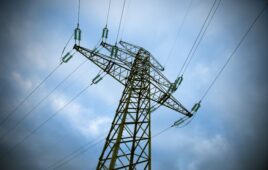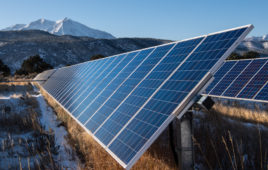Solar accounted for 40% of all new electric generating capacity in the United States in 2019, its highest share ever and more than any other source of electricity, with 13.3 GW installed.
Despite policy challenges and a second year of the Section 201 tariffs, the U.S. solar market grew by 23% from 2018, according to the U.S. Solar Market Insight 2019 Year-in-Review report, released by the Solar Energy Industries Association (SEIA) and Wood Mackenzie.
“Even as tariffs have slowed our growth, we’ve always said that the solar industry is resilient, and this report demonstrates that,” said Abigail Ross Hopper, president and CEO of SEIA. “We know anecdotally that the COVID-19 pandemic is starting to impact delivery schedules and that it could affect demand for solar as well as our ability to meet project completion deadlines based partly on new labor shortages. This once again is testing our industry’s resilience, but we believe, over the long run, we are well-positioned to outcompete incumbent generators in the ‘Solar+ Decade’ and to continue growing our market share.”
SEIA and Wood Mackenzie are closely monitoring changes to the industry as a result of the COVID-19 pandemic. As of the release of this publication, the full impacts of the coronavirus outbreak on the solar industry are still developing.
Given the dynamic nature of the outbreak, it is too early to incorporate any changes into the outlooks with enough certainty. Wood Mackenzie’s solar team is tracking industry changes closely as they relate to solar equipment supply chains, component pricing and project development timelines, and our organizations will issue follow-up reports on the impacts of the pandemic as needed.
According to the report, the total installed PV capacity in the United States is projected to rise by 47% in 2020, with nearly 20 GW of new installations expected by the end of the year. Each of the next two years are expected to be the largest on record for the U.S. solar industry.
 The residential solar sector saw record-setting installation totals with more than 2.8 GW installed, led by a record year in California and continued growth in emerging markets. The segment saw an annual growth of 15% while achieving its highest installation volumes in history.
The residential solar sector saw record-setting installation totals with more than 2.8 GW installed, led by a record year in California and continued growth in emerging markets. The segment saw an annual growth of 15% while achieving its highest installation volumes in history.
But emerging markets also deserve credit for this year’s record-breaking installations as Florida installed the second most rooftop solar in the country after California.
“With much of the residential solar market to-date driven by California and Northeast states, Florida is a window into the future of the national residential solar market given its resemblance to the vast swath of markets with no state-wide incentive programs or the high electricity prices that make rooftop solar so attractive,” said Austin Perea, senior analyst with Wood Mackenzie.
Meanwhile, the utility-scale market added 8.4 GW of new capacity in 2019, more than half of which came online in Q4. The 4.4 GW of utility PV installed in the fourth quarter makes it the second-largest quarter in history for the market. A total of 30.4 GW of new utility PV projects were announced in 2019, bringing the contracted pipeline to a record high of 48.1 GW.
In 2019, non-residential PV saw an annual decline of 7%, due largely to policy reforms and interconnection delays in key states like California and Massachusetts. A shrinking pipeline of community solar projects in Minnesota also contributed to deployment declines, while community solar markets in New York, Maryland, Illinois and New Jersey are expected to grow going forward.
The emergence of Texas and Florida as top solar states, along with a strong year in established markets like Arizona, Georgia and North Carolina, helped drive solid growth in 2019 across all segments.
Over the next five years, the total installed U.S. PV capacity will more than double, with annual installations reaching 20.4 GW in 2021 prior to the expiration of the federal solar Investment Tax Credit for residential systems and a drop to 10% for commercial and utility-scale customers.
Key findings from the report include:
- Solar accounted for 40% of all new electricity generating capacity added in the U.S. in 2019.
- In 2019, the U.S. solar market installed 13.3 GW of solar PV, a 23% increase from 2018.
Cumulative operating PV capacity in the U.S. now exceeds 76 GW, up from just 1 GW at the end of 2009. - The U.S. saw record-setting residential solar capacity added in 2019 with more than 2.8 GW installed.
- The contracted utility PV pipeline grew to a record high of 48.1 GW in 2019.
- Community solar continues to expand its geographic diversification, with the sub-segment seeing its third consecutive year of more than 500 MW installed.
Note: While there is reference in this report to the unknown impacts of COVID-19 on projections, SEIA wants to acknowledge the toll the pandemic is having, and emphasize that projections may need to be revised as the wider effects of the crisis across our interconnected society become clearer.
News item from SEIA





Great content! Glad to see more people realize solar is worth the investment long term. Thanks for sharing.